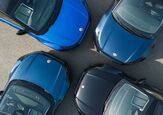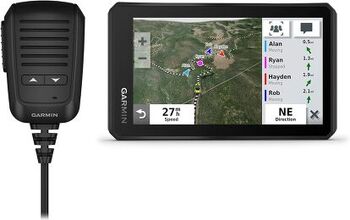Piston Slap: Need a "Hans and Franz" ABS Workout?

Craig writes:
Sajeev,
Some time ago I purchased a 1995 (E36) BMW M3 as a project car. Mostly I have limited myself to bringing the maintenance up to date. I have a more than averagely equipped workshop and can find my way around a car pretty well (I have even built my own Brunton SuperStalker) One problem that has eluded me from day 1 is an intermittent ABS light.
Should I just ditch the ABS forever or is there a way to trouble shoot these things without Hans and Franz at the stealership taking me for a ride?
Sajeev answers:
I tend to like ABS, especially for a car that’s so race course worthy. The E36 M3 is just a fantastic car in so many ways. That said, I was disappointed when I googled Brunton SuperStalker and realized it wasn’t a murdered out full-size van with a suped up turbo diesel motor, air-ride suspension and big ass wheels.
A non-van referred to as a SuperStalker? That’s almost criminal!
Right. So, about the diagnosis, you have two options. The first is spending a lot of time on the BMW forums, learning how to diagnose this vintage system and possibly finding a common problem with a somewhat easy to fix solution. Not really your cup of tea? Then find an independent mechanic that specializes in BMWs and get 1-2 hours of their diagnosis instead. It will be worth it.
The dealership isn’t the best move here, usually. Cars that are “E36-old” need a shop that is tailor-made to their unique needs. Many (insert make here) dealerships know a good vintage (insert the same make here) shop and will recommend them to anyone. Yes, I’ve seen it happen! Most importantly, Hans and Franz will always encourage you to work your ABS.
“Hear me now, and believe me later: WORK YOUR E36 ABS! ARE YOU A GIRLY MAN?”
Send your queries to sajeev@thetruthaboutcars.com. Spare no details and ask for a speedy resolution if you’re in a hurry.

More by Sajeev Mehta
Latest Car Reviews
Read moreLatest Product Reviews
Read moreRecent Comments
- Spectator Wild to me the US sent like $100B overseas for other peoples wars while we clammer over .1% of that money being used to promote EVs in our country.
- Spectator got a pic of that 27 inch screen? That sounds massive!
- MaintenanceCosts "And with ANY car, always budget for maintenance."The question is whether you have to budget a thousand bucks (or euro) a year, or a quarter of your income.
- FreedMike The NASCAR race was a dandy. That finish…
- EBFlex It’s ironic that the typical low IQ big government simps are all over this yet we’re completely silent when oil companies took massive losses during Covid. Funny how that’s fine but profits aren’t. These people have no idea how business works.



































Comments
Join the conversation
Broken wiring was the problem with the ABS system I once repaired. I'd do a good visual inspection and if you're into letting others touch your car you could maybe even have a specialty shop look at it. If the problem is then obvious, fix it. If not, I'd leave it. I don't think I'd ever flat-spot a set of tires badly enough to justify spending a bunch of time and money to get it working.
If it's looking expensive in relation to how else that money could be spent on getting the car sorted, why not delete ABS and pull the bulb? From what I've read it seems ABS is over-rated as a safety feature. I've driven low-spec Jap cars with ABS where once it activated, braking was weaker than if you could just use the brakes yourself. Although BMW apparently have their brakes pretty sorted. From the Dog and Lemon guide on ABS: “Although ABS performs well on the test track, there is no evidence [that it] made significant reductions in the number of on-the-road crashes. A 1994 Highway Loss Data Institute (HLDI) study and a subsequent 1995 study compared insurance claims for groups of otherwise identical cars with and without ABS, found no differences in the overall frequency or cost of crashes...” Because ABS should make the most difference on wet and slippery roads, researchers also studied insurance claims experience in 29 northern American states during winter months. Even there they found no difference in the frequency of insurance claims for vehicles with and without anti-lock brakes. A 1997 Institute study and a 2001 update reported no difference in the overall fatal crash involvement of cars with and without ABS. Federal studies of ABS are consistent with Institute and HLDI findings. According to one federal report, ‘the overall, net effect of antilock brakes’ on both police-reported crashes and fatal crashes ‘was close to zero’. No one knows for sure why the test performance of ABS has not translated into a significant reduction in real-world crashes. A possible reason is that the average motorist rarely experiences total loss of vehicle control, which antilocks are designed to prevent. There is also evidence that many car owners do not know how to use antilock brakes effectively. An Institute survey of drivers with ABS-equipped cars found that more than 50 percent in North Carolina and 40 percent in Wisconsin incorrectly thought they should pump the brakes. Another possibility is that some motorists may drive less cautiously because they believe anti-lock brakes allow them to brake better. One possible reason for the failure of ABS to lower the road toll is that it affects the brakes only, leaving a human to make a number of critical (and sometimes wrong) decisions. Electronic Stability Control can help with this problem.